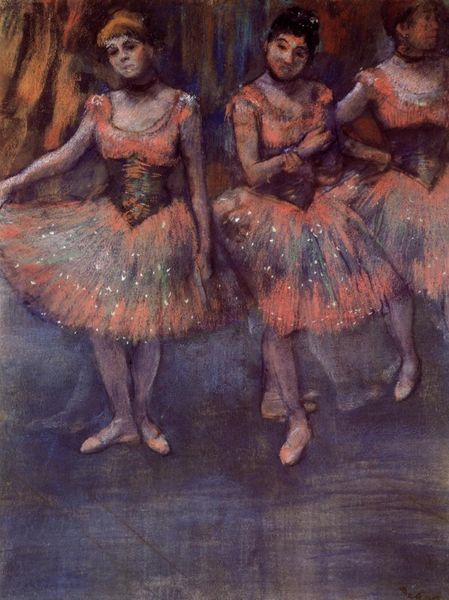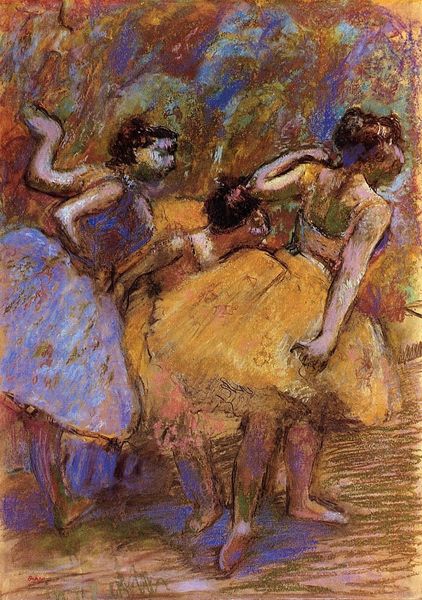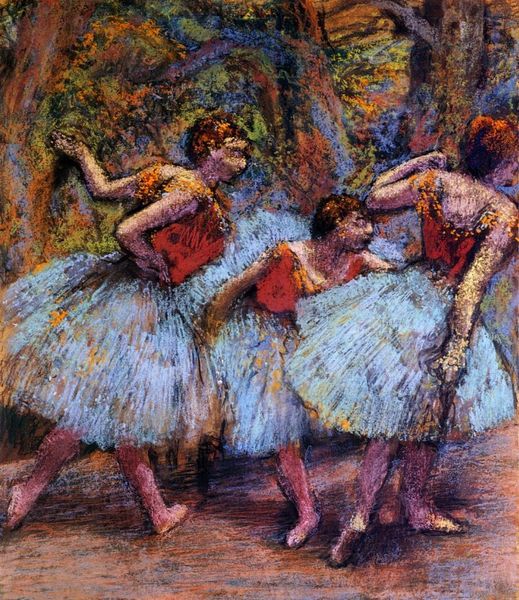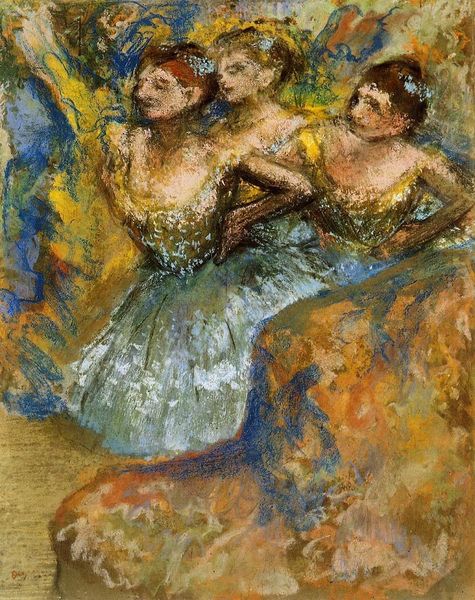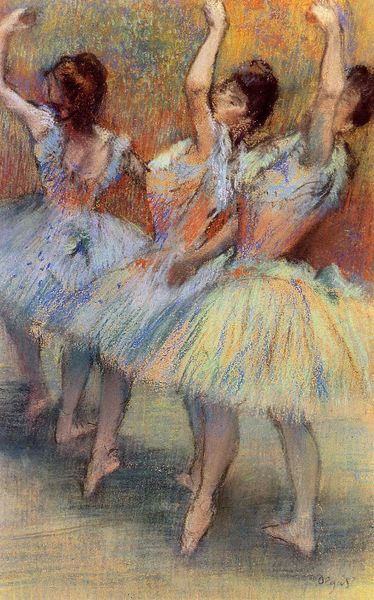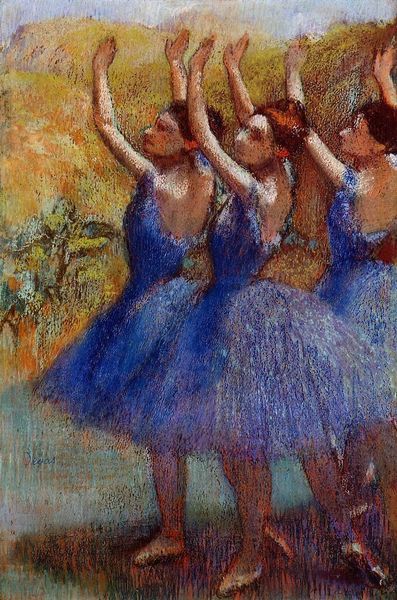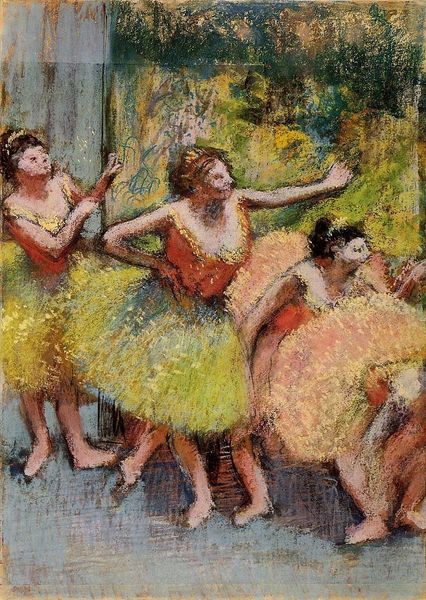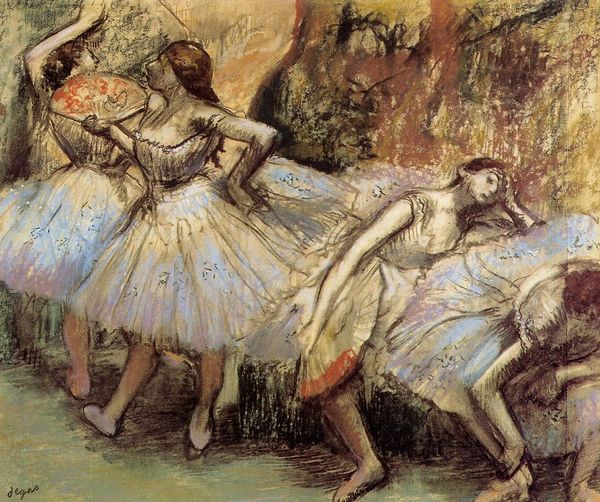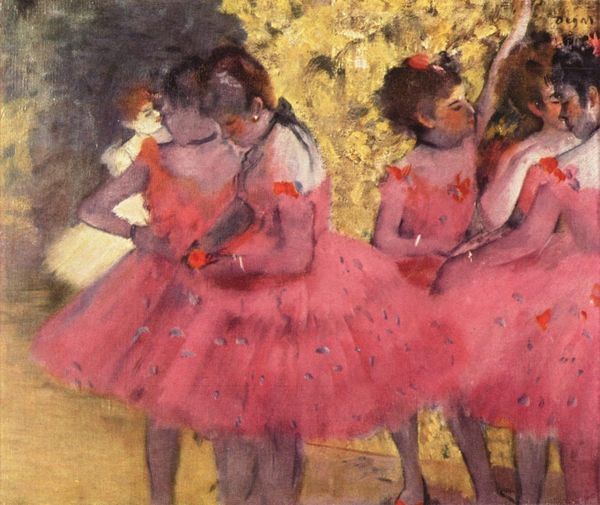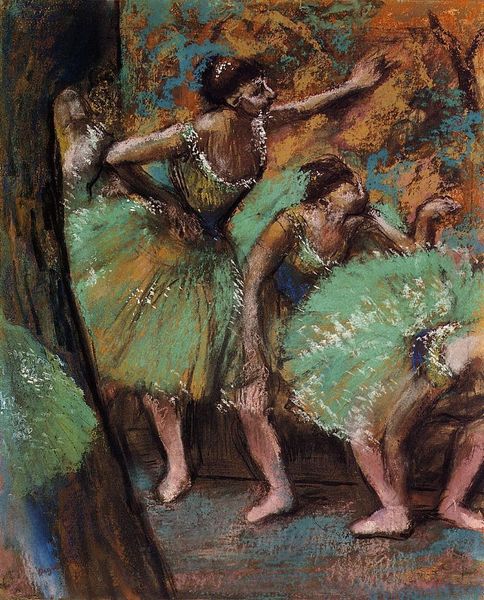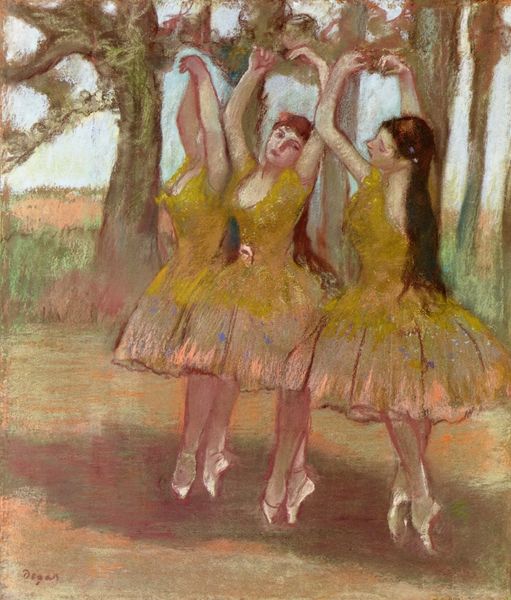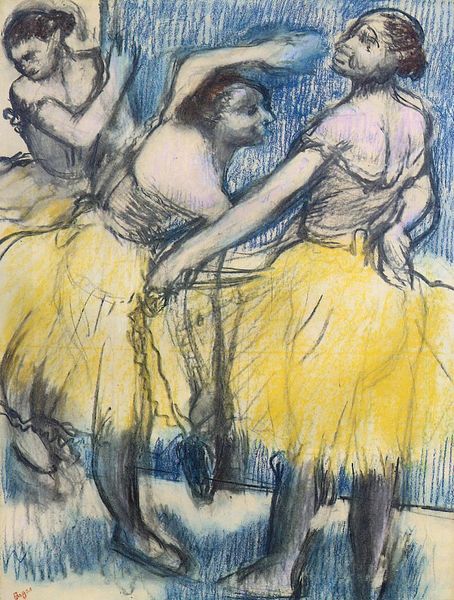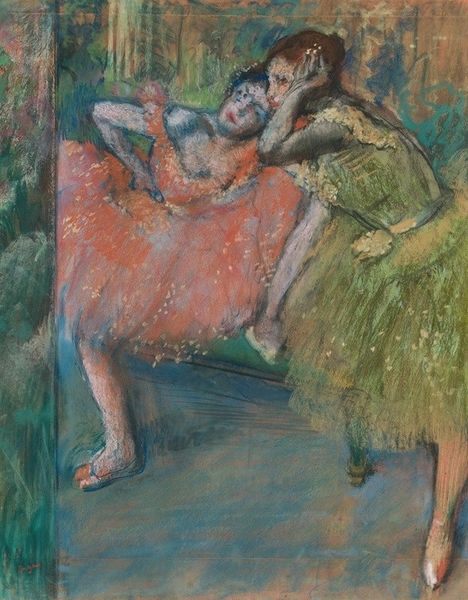
Copyright: Public domain
Edgar Degas made this pastel drawing, Red Ballet Skirts, to capture a class of dancers. Made in France, most likely in the 1880s, it offers an intriguing look at the ballet as a cultural institution. Degas was fascinated by the movements and poses of dancers, but his work also reveals the labor and discipline behind the performances. Here, the red skirts create a visual code. They are a signifier of the theatre, performance, and spectacle. As historians, we are interested in the politics of imagery. Who is represented in this art? What are the social conditions that shape its creation? Ballet at this time was more than entertainment. It involved the livelihoods of many young women, and the art reflects this complex social structure. To understand Degas's work better, we can look at the archives of Parisian theatres, the history of dance education, and the social context of late 19th-century France. This is how we understand the artwork as contingent on its social and institutional context.
Comments
No comments
Be the first to comment and join the conversation on the ultimate creative platform.
